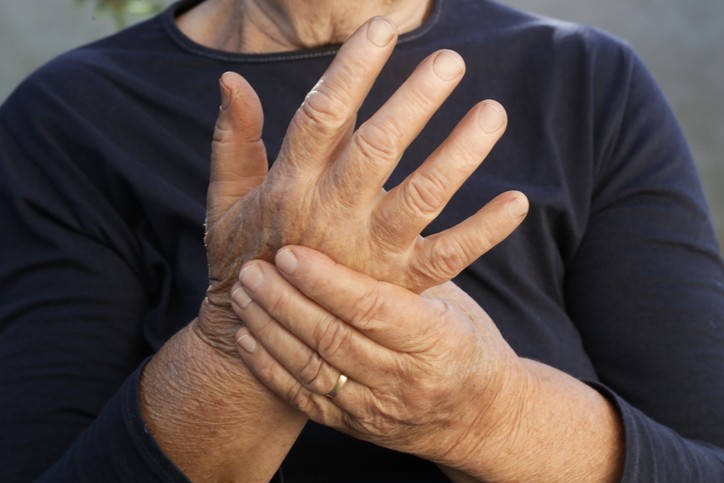
Medscape: New wearable could retrain the brain after stroke
UC expert comments on recent study
The University of Cincinnati's Oluwole Awosika commented to Medscape on a new study that found a vibrating glove device could help manage hand spasticity symptoms after a stroke.
Researchers at Stanford University and Georgia Tech have developed a wearable device that straps around the wrist and hand, delivering subtle vibrations (akin to a vibrating cellphone) that may relieve spasticity as well as or better than the standard Botox injections.
Spasticity is a common post-stroke condition that occurs when a muscle involuntarily contracts, causing stiff or rigid muscles, often in patients' hands.
In a clinical trial, patients wore the device for three hours a day for eight weeks, while doing their usual activities. Symptom relief continued or improved for some patients, even after they stopped using the device, and more than half of the participants experienced equal or better results than another group that only received regular Botox injections.
"One of the treatments for spasticity — medications aside, this vibration machine aside — is more exercise, more passive range of motion," said Awosika, MD, associate professor of Neurology and Rehabilitation Medicine in UC's College of Medicine, who was not involved in the study. "It would have been nice to have a control group that didn't get any of this stimulation or that was only encouraged to do three hours of movement a day. What would the difference be?"
Featured photo at top of a woman's hands. Photo/triocean/iStock.
Related Stories
News Cincinnati loved in 2025
January 2, 2026
The story of prohibition bootlegger George Remus was among WLWT's favorite segments in 2025. UC Law Professor Christopher Bryant spoke with journalist Lindsay Stone about Remus using a temporary insanity defense during a murder trial.
What to know about this year’s big tax changes
January 2, 2026
Local 12 reported that taxpayers can expect some major changes this tax season. Gary Friedhoff, adjunct instructor at the University of Cincinnati’s Carl H. Lindner College of Business, recently spoke to Local 12 about how to avoid surprises.
Study finds police officers face higher long-term health risks
January 2, 2026
J.C. Barnes, a University of Cincinnati professor, is interviewed by Spectrum News about new research showing that the physical and psychological demands of law enforcement can contribute to earlier deaths.
